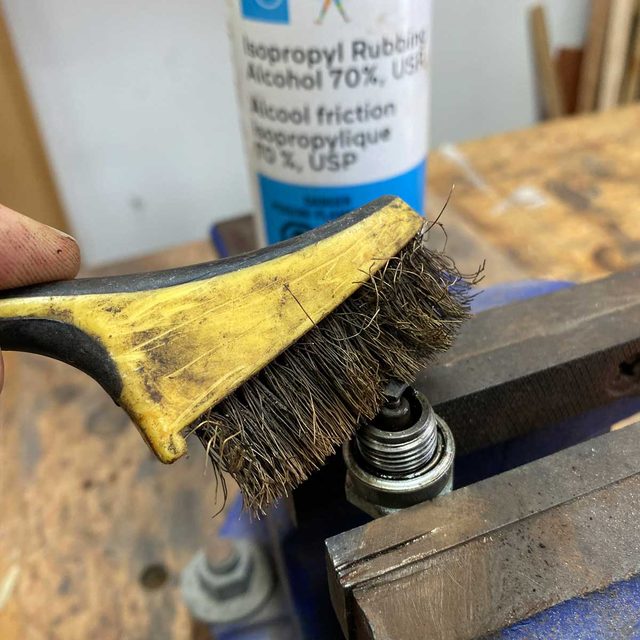Step 5
Re-install the spark plug
- Use your fingers to thread the spark plug back into the engine. Follow up with a wrench for final tightening.
- Push the spark plug wire down over the end of the spark plug. Rotate the rubber boot a bit one way then the other as you’re pushing it in place to make sure the connection is secure.
- Replace any shroud or covering you removed earlier.
- Test your work by starting and running the engine.
 Steve Maxwell for Family Handyman
Steve Maxwell for Family Handyman
FAQ
What should I do if my small engine won’t start?
To diagnose the problem, start with the basics, says Watson. “Check your fuel and oil levels, because sometimes it’s really that simple,” he says. “Some small engines also have a low-oil-level sensor that prevents the engine from running or starting if it is low.”
Other common causes include the battery, fouled spark plugs, clogged air filters or fuel lines, gummed up carburetor, flooded engine and cold weather (since the oil becomes thicker).
How can I prevent small engine problems from happening?
Routine maintenance is the best way to avoid small engine problems. That will also extend its lifespan. Keep the air and fuel filter clean, use the recommended fuel grade for your engine, change the oil regularly and use fuel stabilizer if your engine is not going to be used for a while.
“Since these engines are air-cooled, use compressed air to clear out debris, and wash it every now and then,” says Chris “Moose” Pyle, a JustAnswer master certified mechanic. “The high temperatures from a dirty engine will make your oil wear out and fail faster.”
About the Experts
- Duane “Doc” Watson is a technical trainer at Bosch Mobility Aftermarket. He has more than 45 years of experience in automotive repair, has trained thousands of technicians and earned many industry awards, including Chevrolet Technician of the Year and Buick Service Master of the Year.
- Chris “Moose” Pyle is a master-certified technician with 20-plus years of automotive experience, and an auto expert on JustAnswer, the expert on-demand platform.


























